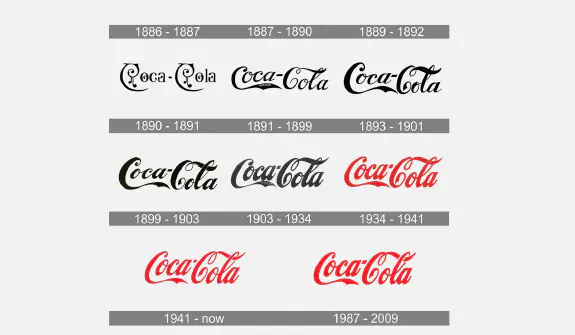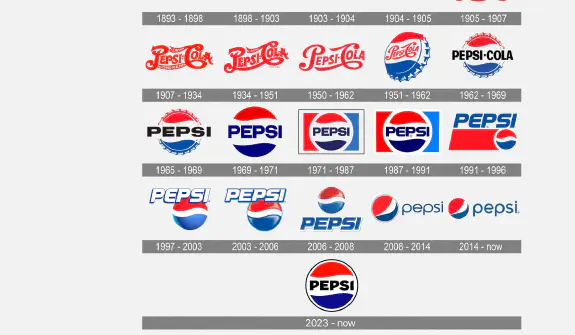Az arculattervezés befektetés, nem költség – Íme, miért

A márkaépítés és a marketing egyik leggyakrabban vitatott témája a logó értéke. Számos vállalkozó és marketingszakember hajlamos a logót vagy minimalizálandó költségnek, vagy jelentős pénzügyi elkötelezettséget igénylő befektetésnek tekinteni. Ez a bináris nézőpont azonban figyelmen kívül hagyja annak valódi lényegét, amit egy logó képvisel. A logó mindkét kategórián felül áll, és a márka identitásának és stratégiájának létfontosságú elemeként funkcionál. Ez a cikk feltárja a logókkal kapcsolatos tévhiteket, megvizsgálva szerepüket, előnyeiket, hosszú távú értéküket, pszichológiai hatásukat és figyelemre méltó esettanulmányokat.
A logó szerepének megértése
Lényegét tekintve a logó több, mint egyszerű grafika vagy kép; egy márka értékeit, küldetését és esszenciáját testesíti meg. Ez egy vizuális reprezentáció, amely a márka identitását kommunikálja a fogyasztók felé, és felismerési pontként szolgál. Egy jól megtervezett logó magában foglalja a márka személyiségét, és érzelmi kapcsolatot teremt közönségével.
A logók számos kulcsfontosságú funkciót töltenek be a márkaépítésben:
- Identitás és felismerhetőség: Egy logó segít megkülönböztetni egy márkát a zsúfolt piacon. Vizuális rövidítést biztosít a fogyasztók számára, lehetővé téve a gyors felismerést. Például a McDonald’s arany ívei egyetemesen felismerhetőek, és specifikus asszociációkat idéznek elő a gyorsétterem és a család kapcsán.
- Kommunikáció: Egy logó üzeneteket közvetít a márka értékeiről, kultúrájáról és célközönségéről. A logóban használt szín, forma és tipográfia különböző érzelmeket és tulajdonságokat sugallhat. Például a zöldet gyakran a egészséggel és a fenntarthatósággal, míg a kéket a bizalommal és a professzionalizmussal társítják.
- Konzisztencia: A logók elősegítik a konzisztenciát a marketingcsatornákon és anyagokon keresztül. Egyesítik a márkaépítési erőfeszítéseket, biztosítva, hogy minden interakció, amelyet egy fogyasztó a márkával folytat, koherens legyen, és megerősítse annak identitását.
- Érzékelt érték: Egy professzionális logó növeli a márka hitelességét. A fogyasztók számára azt jelzi, hogy a vállalkozás megalapozott és komolyan veszi identitását, ami növeli a termékekbe vagy szolgáltatásokba vetett bizalmat és magabiztosságot.
Ily módon a logók szerves részét képezik a márkaépítésnek, alapvető elemként működve, amely túlmutat az egyszerű esztétikán.
A befektetés és a költség megkülönböztetése
Hagyományos pénzügyi értelemben a befektetések várhatóan hozamot termelő eszközök, míg a költségek a vállalkozás működésével kapcsolatban felmerülő kiadások. Sok vállalkozó költségként kategorizálja a logókészítést, különösen akkor, ha alacsony költségű megoldást vagy „csináld magad” megközelítést választanak. Ezzel szemben, ha egy logót kizárólag befektetésként tekintenek, az gyakran ahhoz a tévhithez vezet, hogy az közvetlen pénzügyi megtérülést garantál.
Ez a dichotómia azonban nem ragadja meg a logó intrinszik értékét a márkaépítési folyamatban. Ahelyett, hogy egyértelműen a befektetés vagy a költség kategóriájába sorolnánk, a logót stratégiai eszközként kell tekintenünk – olyanként, amely hozzájárul a márkatőkéhez és a hosszú távú sikerhez.
- Hosszú távú stratégiai érték: A logó hosszú távú eszköz, amely a márkával együtt fejlődik. Értéke idővel felhalmozódik, ahogy a márka ismertséget és lojalitást épít ki. A tranziens költségekkel ellentétben a logó értéke növekedhet, ahogy a márka piaci részesedést és fogyasztói bizalmat szerez.
- Költség vs. érték: A logókészítés költsége széles skálán mozoghat, de az általa nyújtott érték messze meghaladhatja a kezdeti árat. A professzionális tervezési szolgáltatásokba történő befektetés elsőre költségesnek tűnhet, de a hosszú távú előnyök – a fokozott márkapercepció, a vásárlói lojalitás és a piaci differenciálódás – gyakran felülmúlják a kezdeti kiadásokat.
- Holisticus márkaépítési megközelítés: Ha egy logót pusztán költségnek vagy befektetésnek tekintünk, az elszigeteli azt a szélesebb márkaépítési stratégiától. A logónak egy átfogó márkaépítési megközelítés részét kell képeznie, integrálva más elemekkel, mint például az üzenetküldés, a design és a vásárlói élmény. Ez az integráció felerősíti a logó hatékonyságát a márka képviseletében.
Összefoglalva, a logó egy stratégiai eszköz, amely kulcsszerepet játszik a márka identitásának felépítésében, így sem egyszerű költség, sem egyszerű befektetés.
Előnyök a vállalkozások számára
Egy jól megtervezett logó számos előnnyel járhat a vállalkozások számára, befolyásolva növekedésüket és piaci pozíciójukat. Íme néhány kulcsfontosságú előny:
- Márkafelismerés: Egy emlékezetes logó jelentősen javíthatja a márkafelismerést. A Marylandi Loyola Egyetem tanulmánya szerint a szín akár 80%-kal is növeli a márkafelismerést. Ez azt jelenti, hogy egy jellegzetes logó segíthet egy márkának kitűnni a fogyasztók elméjében, növelve az ismételt vásárlások valószínűségét.
- Vásárlói hűség: A logók érzelmi kapcsolatot teremtenek a fogyasztókkal. Az American Marketing Association kutatásai azt mutatják, hogy az erős márkahűség akár 20%-os értékesítésnövekedéshez is vezethet. Amikor a vásárlók kapcsolatot éreznek egy márkával – amely részben a logóján keresztül alakul ki –, nagyobb valószínűséggel térnek vissza és ajánlják azt másoknak.
- Differenciálódás egy versenyképes piacon: A telített piacokon egy egyedi logó segít egy márkának kitűnni a versenytársak közül. Ez a differenciálódás létfontosságú a választék sokaságával elárasztott vásárlók vonzásához. Egy erős logó gyorsan közvetítheti, hogy mit képvisel egy márka, és miért előnyösebb az alternatívákhoz képest.
- Professzionalizmus és hitelesség: Egy jól kidolgozott logó professzionalizmust kommunikál, növelve a márka hitelességét. Egy olyan világban, ahol a fogyasztók egyre igényesebbek, egy letisztult logó jelezheti a potenciális vásárlók számára, hogy egy márka megbízható és komolyan veszi ajánlatait.
- Megnövekedett piaci érték: Egy felismerhető logó hozzájárulhat egy márka összértékéhez. Az erős logóval rendelkező márkák gyakran magasabb piaci értékelést élveznek, mivel fogyasztói bizalmat és lojalitást parancsolnak. Például az olyan márkák, mint az Apple és a Nike, nemcsak logójukról ismertek, hanem az e szimbólumok által képviselt hatalmas márkatőkéből is profitálnak.
Hosszú távú érték
A logók egyedülálló képességgel rendelkeznek tartós benyomások keltésére és a márka idővel történő felidézésének elősegítésére. Hosszú távú értékük számos tényezőnek tulajdonítható:
- Márkafelidézés: Egy jól megtervezett logó javíthatja a memóriamegőrzést, megkönnyítve a fogyasztók számára, hogy felidézzenek egy márkát vásárlási döntések meghozatalakor. A Journal of Consumer Research folyóiratban megjelent tanulmány megállapította, hogy a márkalogók jelentősen befolyásolják a memória felidézését, megerősítve azt az elképzelést, hogy a hatékony vizuális márkaépítés fokozott felismeréshez vezet.
- Konzisztencia az érintkezési pontokon: A logók konzisztenciát biztosítanak a márkaépítésben különböző csatornákon keresztül, beleértve a csomagolást, a reklámozást és az online jelenlétet. Ez a konzisztencia biztosítja, hogy a fogyasztók egységes üzenetet kapjanak, erősítve a márkafelismerést és a felidézést.
- Adaptálhatóság: Ahogy a piacok fejlődnek, a logók alkalmazkodhatnak, hogy relevánsak maradjanak. Sok sikeres márka rendszeresen frissíti logóját, hogy naprakész maradjon, miközben megőrzi azokat az elemeket, amelyek a fogyasztók elméjében rögzítik őket. Például az Airbnb legutóbbi márkafrissítése aktualizálta logóját, miközben megőrizte alapvető designelemeit, biztosítva a folytonosságot, miközben egy új generáció számára is vonzóvá vált.
- Kulturális jelentőség: A logók idővel kulturális ikonokká válhatnak, nemcsak egy márkát, hanem társadalmi mozgalmakat vagy trendeket is képviselve. Például a Nike ikonikus „pipája” túllépett logó funkcióján, és az atletikusság és az önbizalom szinonimájává vált.
- Érzelmi rezonancia: Ahogy a fogyasztók kapcsolatokat építenek ki a márkákkal, a logók pozitív érzelmeket és emlékeket idézhetnek elő. Idővel ez az érzelmi kapcsolat mélyebb márkahűséghez és érdekképviselethez vezethet, hozzájárulva a hosszú távú sikerhez.
Lényegében a logó hosszú távú értéke abból a képességéből származik, hogy értelmes kapcsolatokat és tartós benyomásokat teremt, amelyek túlmutatnak a kezdeti interakciókon.
Esettanulmányok és példák
A sikeres (és sikertelen) logók valós példáinak vizsgálata értékes betekintést nyújthat a márkaépítési stratégiákra gyakorolt hatásukba.
Sikeres példák

- Nike: A Nike „pipája” az egyik legfelismerhetőbb logó globálisan. Egyszerűsége és dinamikus formája a mozgást és az atletikusságot tükrözi, tökéletesen igazodva a márka küldetéséhez. Az évek során a logó az élsport szinonimájává vált, tovább növelve a Nike márkatőkéjét.
- Coca-Cola: A Coca-Cola kurzív logója időtlen klasszikus. Dizájnja nagyrészt változatlan maradt a 19. század vége óta, lehetővé téve számára a márkakontinuitás és a felismerhetőség fenntartását. A logó jellegzetes tipográfiája és élénk piros színe megszilárdította a Coca-Cola vezető pozícióját az italiparban.
- Apple: Az Apple logója minimalista dizájnjával és ikonikus harapásával az innovációt és a kreativitást szimbolizálja. Ez a logó kulcsszerepet játszott abban, hogy az Apple prémium márkává vált, amely a csúcstechnológiáról és a dizájnról ismert.
Sikertelen példák

- Gap: 2010-ben a Gap megpróbálta modernizálni logóját, klasszikus dizájnját egy új, leegyszerűsített változattal helyettesítve. A fogyasztók felháborodása gyors volt, nyilvános felháborodáshoz vezetve. Egy héten belül a Gap visszatért eredeti logójához, demonstrálva, hogy a logóhoz fűződő jelentős érzelmi kötelékek hogyan befolyásolhatják a márkapercepciót.
- Pepsi: A Pepsi az évek során többször is megváltoztatta logóját, ami márkazavart okozott a fogyasztók körében. Bár egyes iterációk kedvező fogadtatásra találtak, másokat kritizáltak a világosság hiánya és a márka identitásával való rezonálás hiánya miatt, kiemelve a konzisztencia fontosságát a logódizájnban.
Ezek a példák illusztrálják, hogy bár egy erős logó felemelheti a márkát, a gyenge designválasztások vagy a márkaértékekkel való összehangolatlanság negatív fogyasztói percepciókhoz vezethet.
A logók pszichológiai hatása
A logók jelentős pszichológiai erővel bírnak a fogyasztói percepciókra és viselkedésre gyakorolt hatásukban. Ennek a hatásnak a megértése segíthet a márkáknak olyan logókat tervezni, amelyek hatékonyan rezonálnak a célközönségükkel.
- Színpszichológia: A színek specifikus érzelmeket és asszociációkat váltanak ki. Például a kéket gyakran a bizalomhoz és a biztonsághoz kötik, így népszerű választás a pénzügyi intézmények számára. Ezzel szemben a piros izgalmat és szenvedélyt idéz elő, amelyet általában az élelmiszer- és italiparban használnak. A márkák kihasználhatják a színpszichológiát, hogy fokozzák logójuk hatékonyságát üzenetük közvetítésében.
- Forma és alak: A logókban használt formák szintén befolyásolhatják a percepciókat. A kör alakú logók gyakran egységet és harmóniát közvetítenek, míg a szögletes logók erőt és stabilitást sugallhatnak. A különböző formák konnotációinak megértése lehetővé teszi a márkák számára, hogy olyan logókat tervezzenek, amelyek összhangban vannak a kívánt identitásukkal.
- Ismerősség és bizalom: Az ismerősség bizalmat szül. A fogyasztók által felismert logók kényelem és megbízhatóság érzését keltik, befolyásolva vásárlási döntéseiket. A kutatások azt mutatják, hogy a fogyasztók nagyobb valószínűséggel választanak ismerős márkákat az ismeretlenekkel szemben, hangsúlyozva a hatékony logódizájn fontosságát.
- Érzelmi kapcsolatok: A logók olyan érzelmi válaszokat válthatnak ki, amelyek befolyásolják a fogyasztói viselkedést. Amikor a fogyasztók erős érzelmi kapcsolatot éreznek egy márkával – amely gyakran a logóján keresztül alakul ki –, nagyobb valószínűséggel válnak hűséges támogatókká. Ez az érzelmi rezonancia fokozott szájról szájra marketinghez és ügyfélmegtartáshoz vezethet, tovább erősítve a márka piaci pozícióját.
- Memória kódolás: A logók kulcsszerepet játszanak a memória kódolásában, megkönnyítve a fogyasztók számára, hogy emlékezzenek a márkákra és azok ajánlataira. Egy jól megtervezett logó mentális képet hoz létre, amelyet a fogyasztók felidézhetnek, amikor vásárlási döntésekkel szembesülnek, végső soron növelve az értékesítést és a márkahűséget.
Következtetés
Összefoglalva, az az elképzelés, miszerint egy logó csupán költség vagy befektetés, túlságosan leegyszerűsítő és félrevezető. A logó egy sokrétű eszköz, amely kritikus szerepet játszik a márka identitásának meghatározásában és sikerének előmozdításában. A logó valódi értékének megértésével a vállalkozók és a marketingszakemberek kihasználhatják ezt a lényeges elemet erős márkák építésére, amelyek rezonálnak a fogyasztókkal és kiállják az idő próbáját.
Főbb tanulságok
- A logó az identitást képviseli: A logó egy márka identitásának, értékeinek és küldetésének vizuális megjelenítése. Túlmegy az esztétikán, hogy megtestesítse, amit egy márka képvisel.
- Nem csak költség vagy befektetés: Ahelyett, hogy költségként vagy befektetésként kategorizálná a logót, ismerje fel azt stratégiai eszközként, amely hozzájárul a hosszú távú márkatőkéhez.
- Előnyök a vállalkozások számára: Egy jól megtervezett logó fokozza a márkafelismerést, a vásárlói hűséget és a differenciálódást, ami növeli az értékesítést és a piaci jelenlétet.
- Hosszú távú érték: A logók tartós benyomásokat keltenek és elősegítik a márkafelidézést, értékes eszközökké téve őket, amelyek idővel értékelődnek fel.
- Esettanulmányok illusztrálják a hatást: A sikeres márkák bemutatják, hogy a hatékony logók hogyan emelhetik a márkatőkét, míg a kudarcok megmutatják a fogyasztói összehangolás és a következetes márkaépítés fontosságát.
- A pszichológiai hatás számít: A logók pszichológiai hatásainak, beleértve a színt és a formát, megértése segíthet a márkáknak olyan dizájnokat létrehozni, amelyek rezonálnak a célközönségükkel.
Végső soron a logó nem csak egy grafikai elem; ez a márkaépítés stratégiai sarokköve, amely formálhatja a fogyasztói percepciókat, növelheti a lojalitást és javíthatja a piaci pozíciót. Ennek a perspektívának az elfogadása lehetővé teszi a márkák számára, hogy kihasználják logójuk teljes potenciálját, és erőteljes eszközökké alakítsák őket a növekedés és a siker érdekében. Egy olyan világban, ahol az első benyomások számítanak, egy jól kidolgozott logóba való befektetés elengedhetetlen lépés egy tartós és hatásos márka építése felé. Lépjen velünk kapcsolatba még ma, hogy megtudja, hogyan segíthetünk Önnek olyan logót létrehozni, amely rezonál közönségével, és előreviszi márkáját.
Erőforrások
- Forbes - The Importance of Branding in Business (új ablakban nyílik meg)
- Smashing Magazine - What’s Brand? (új ablakban nyílik meg)
- Logo Design Team - What The Purpose Of A Logo Is And Why You Need A Logo For Your Business (új ablakban nyílik meg)
- Inc. - Why Your Company Logo Is More Important Than You Think (új ablakban nyílik meg)
Vágjunk bele közösen, és valósítsuk meg elképzeléseit – együtt!
Kérek egy ingyenes árajánlatotKapcsolódó cikkek

Webalkalmazás megerősítése HTTP biztonsági fejlécekkel
A webalkalmazások biztonságossá tétele napjaink digitális világában kritikus fontosságú. Bár sok fejlesztő a kódszintű biztonsági intézkedésekre összpontosít, a HTTP biztonsági fejlécek további, létfontosságú védelmi réteget kínálnak. További információ az Webalkalmazás megerősítése HTTP biztonsági fejlécekkel

